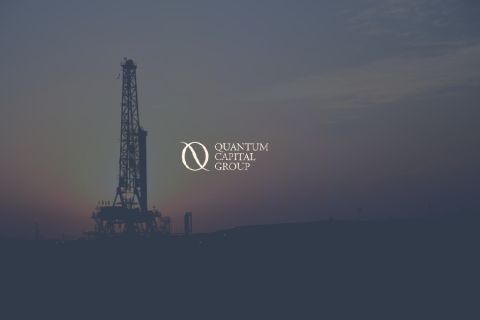
Morgan Stanley said it is convinced that crude oil is on the verge of a turnaround and there will be a price correction over the next four to six weeks.
Natural gas, on the other hand, is seen as hovering around $2.75 per million British thermal units (MMBtu), as opposed to the analysts’ previous long-term price forecast of $3.75/MMBtu. Can you say “lower for longer?”
Morgan Stanley expects increased associated gas production as West Texas Intermediate approaches its anticipated $60 per barrel (bbl) level. Gas play breakevens will continue to decline along with improvements in well performance, efficiency gains and takeaway debottlenecking.

 The analysts are also keeping an eye on renewables. The end of the drought in Western states has allowed hydroelectric power to regain some of the market share it had surrendered to gas.
The analysts are also keeping an eye on renewables. The end of the drought in Western states has allowed hydroelectric power to regain some of the market share it had surrendered to gas.
As for the pro-coal ceremony on March 28 at the U.S. Environmental Protection Agency headquarters, where President Donald Trump signed an executive order pushing back at the Obama administration’s climate change policies, don’t worry about it. Coal is not a threat.
“I think that a lot of the changes that occurred in the power industry to reconfigure or to build new facilities using natural gas will continue,” John Kneiss, a veteran Washington-based energy policy analyst told Hart Energy. “They’ve got improvements in efficiencies in power generation. I think investments have been made.”
The administration’s policies are “probably going to extend the life of some coal-fired electric generation,” he said.
So where will that new surge of coal production go? Kneiss said he thought an opportunity exists for exports to Europe and Asia. In the U.S., though, he sees too many advantages in the natural gas corner for utilities to shift back to coal in any significant way.
 The U.S. Energy Information Administration (EIA) reported on March 30 that the West Coast is relying on rail shipments to shore up its declining production of propane and butanes. The PADD V region, unlike the rest of the country, has been left out of the increase in NGL production that came with higher output from natural gas processing plants in the U.S. The 2016 production on the West Coast averaged 80 Mbbl/d, or 10 Mbbl/d less than in 2010.
The U.S. Energy Information Administration (EIA) reported on March 30 that the West Coast is relying on rail shipments to shore up its declining production of propane and butanes. The PADD V region, unlike the rest of the country, has been left out of the increase in NGL production that came with higher output from natural gas processing plants in the U.S. The 2016 production on the West Coast averaged 80 Mbbl/d, or 10 Mbbl/d less than in 2010.
The EIA noted that while exports from the U.S. to Asia jumped from 131 Mbbl/d in 2010 to 908 Mbbl/d in 2016, the West Coast accounts for only 6% of exports to East Asian ports, despite its distance advantage (14 days at sea) over the U.S. Gulf Coast (28 days). Gulf Coast ports account for 94% of exported NGL volumes to East Asia.
But PADD V exports are growing. In 2016, West Coast exports of propane and butanes rose by 5 Mbbl/d to more than 37 Mbbl/d, with most of the growth moving to Asia, the EIA said. Those volumes are arriving by rail from Western Canadian producers, who no longer have a propane pipeline to ship product to the Midwest since the Cochin Pipeline was repurposed in 2014 to import NGL from Illinois.
 Storage of natural gas in the Lower 48 declined by 43 billion cubic feet(Bcf) in the week ended March 24, the EIA reported. The decrease, matching the consensus of both Bloomberg and S&P Global Platts, resulted in a total of 2.049 Tcf. The figure is 17.1% less than the 2.472 Tcf figure at the same time in 2016 and 13.9% above the five-year average of 1.799 Tcf.
Storage of natural gas in the Lower 48 declined by 43 billion cubic feet(Bcf) in the week ended March 24, the EIA reported. The decrease, matching the consensus of both Bloomberg and S&P Global Platts, resulted in a total of 2.049 Tcf. The figure is 17.1% less than the 2.472 Tcf figure at the same time in 2016 and 13.9% above the five-year average of 1.799 Tcf.
Joseph Markman can be reached at jmarkman@hartenergy.com and @JHMarkman.
Recommended Reading
Quantum’s VanLoh: New ‘Wave’ of Private Equity Investment Unlikely
2024-10-10 - Private equity titan Wil VanLoh, founder of Quantum Capital Group, shares his perspective on the dearth of oil and gas exploration, family office and private equity funding limitations and where M&A is headed next.
Cibolo Energy Closes Fund Aimed at Upstream, Midstream Growth
2024-09-10 - Cibolo Energy Management LLC closed its second fund, Cibolo Energy Partners II LP, meant to boost middle market upstream and midstream companies’ growth with development capital.
Investor Returns Keep Aethon IPO-ready
2024-10-08 - Haynesville producer Aethon Energy is focused on investor returns, additional bolt-on acquisitions and mainly staying “IPO ready,” the company’s Senior Vice President of Finance said Oct. 3 at Hart Energy’s Energy Capital Conference (ECC) in Dallas.
Private Equity Gears Up for Big Opportunities
2024-10-04 - The private equity sector is having a moment in the upstream space.
Post Oak-backed Quantent Closes Haynesville Deal in North Louisiana
2024-09-09 - Quantent Energy Partners’ initial Haynesville Shale acquisition comes as Post Oak Energy Capital closes an equity commitment for the E&P.
Comments
Add new comment
This conversation is moderated according to Hart Energy community rules. Please read the rules before joining the discussion. If you’re experiencing any technical problems, please contact our customer care team.






